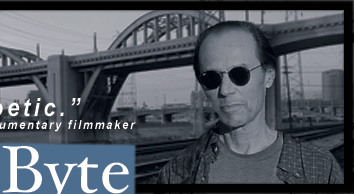
 |
The Crying of Lab 49
I’m not someone who spends time putting flowers on dead people. A dead body is dead. Whether it’s a John Doe at the morgue, my mom at Orange County Memorial, or Michael Jackson in Berry Gordy’s Tomb, I’ve got no interest. It’s the living I like to commune with. “I refuse to let death hamper life,” Jean Paul Sartre once said. “Death must enter life only to define it.” And so it does. In 2004, UCLA officials discovered that dead bodies willed for medical research to the university were being sold out the back door in a very black market. The sales took place between Henry Reid, the willed-body program’s director, and Ernest Nelson, a body broker, who harvested the corpses from UCLA’s cold storage room. Nelson then sawed the cadavers into suitable cuts of meat, packed them in igloos and hauled them off making more than $1 million selling the body parts to pharmaceutical and medical firms for research. During the Reid and Nelson trials, it was discovered that UCLA’s willed body program was operating under unsanitary conditions, had a tracking process that couldn’t account for hundreds of corpses (the folks at UCLA probably figured no one would be visiting and the bodies wouldn’t be going anywhere) and overcrowded cadaver rooms (just for what it’s worth, who complains about overcrowding in a cadaver room?). Anyway, as a result of the inquiry, the willed body program’s director and the body broker went to prison and UCLA’s program was temporarily shut down for improvements. Today, it’s up and running again, with better locks on cadaver lab doors, more freezer space for specimens, bar code IDs embedded in cadavers, and video surveillance at all the sites. After the crackdown, dozens of the donor’s relatives sued the UC Regents. Last year, the relatives lost their case when the California Supreme Court ruled that the university had no legally enforceable obligations with the families; only with the donors themselves. In other words, it would take a resurrection for litigation. Helen Yoshikawa, whose mother’s body had vanished at the labs and whose stepfather’s body had been sawed up, wanted one final word with UCLA’s case lawyers. “I wanted to have the satisfaction,” Yoshikawa told the LA Times, “of looking them in the eye and telling them who we were.” Although, Yoshikawa’s words might have been better suited for the body broker, she told the attorneys about her mother’s hard luck life as she grew up during the Great Depression, struggled in school, became a widow two weeks before her only child was born and then cleaned houses to raise her daughter and put her through college. In donating her body to UCLA, Yoshikawa said her mom, “liked to think she’d help educate some young doctor.” About her family’s body donation, Yoshikawa said “They saw this as a way to do something good, to be more in death than they were in life.” That’s a pretty cold thing to say, don’t you think, Ms. Yoshikawa? First off, maybe your family’s cadavers didn’t educate a young doctor, but they WERE used for research and contributed, through the inquiry, in making UCLA’s body donor program more accountable. That’s gotta count for something. Secondly, your parent’s died. They, as the Hallmark cards say “are not with us anymore.” They have left the vessel and the building. They’re goners. Their cadaver’s may accomplish something, but I’d bet as living family members they were more productive. Thirdly, I certainly don’t condone selling body parts without the express written consent of the owners, yet I wonder how it advances anyone’s cause by suing the university that your parents wanted to help. It’s not like UCLA hired a body broker. They sued him for christ sakes. And yet, Yoshikawa’s reaction was to litigate against the very people her parents wanted to contribute to. Nevertheless, I understand. She was very upset. She felt betrayed. She needed to vent. Let’s hope that letting off some steam helped her realize that her parents probably accomplished more in their lives than as cadavers. Tony Jaguar, one of the character’s in Thomas Pynchon’s book, The Crying of Lot 49 was also involved in the dead body market. Jaguar harvested the bones of dead American GIs from the bottom of Lago di Pieta, a lake in Italy, where Italian soldiers had dumped them. Jaguar was part of a plan to sell the bones to Osteolysis a fictional corporation that would then turn the soldier’s remains into charcoal cigarette filters. The GI’s could have been buried in a cemetery or had their bones stored in a freezer for future medical research or had their ashes scattered in a field of dandelions. Then, we could have made some dandelion wine and had a drink to the dead — as if the dead really do persist, in our bottle of wine, or in our cigarettes, or wherever they’ve disappeared to. Meanwhile, we the living need to concern ourselves with life. — Nathan
Callahan © NathanCallahan.com / Nathan Callahan / all rights reserved |
Broadcasting Fridays at 8:50 am from KUCI 88.9 fm Orange County, California
|